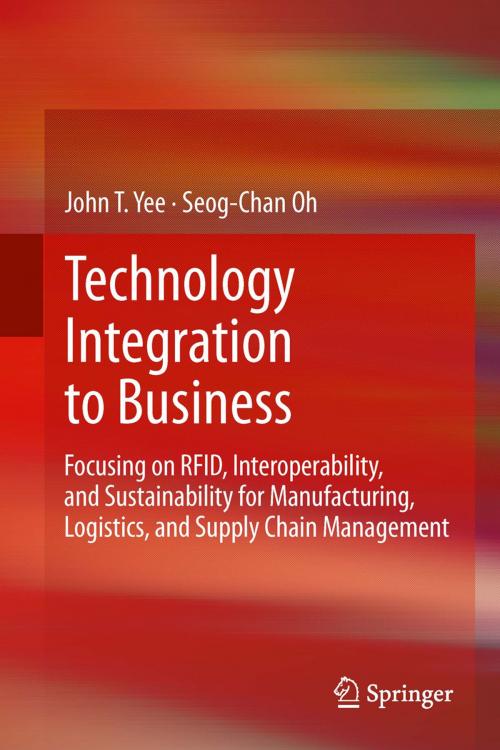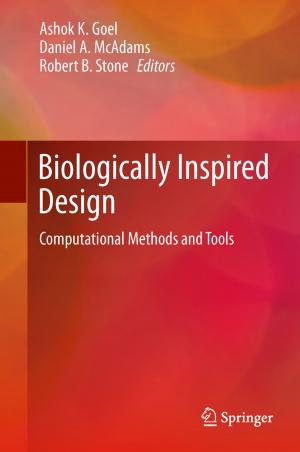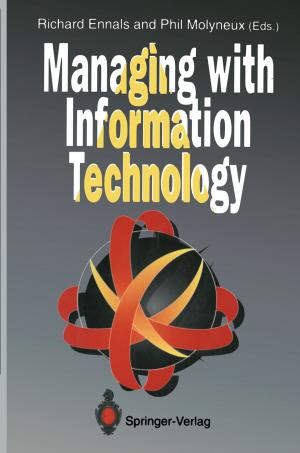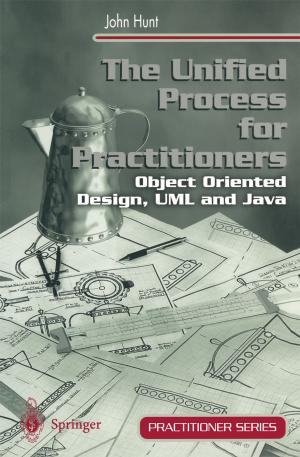Technology Integration to Business
Focusing on RFID, Interoperability, and Sustainability for Manufacturing, Logistics, and Supply Chain Management
Business & Finance, Management & Leadership, Production & Operations Management, Industries & Professions, Information Management, Nonfiction, Science & Nature, Technology| Author: | John T. Yee, Seog-Chan Oh | ISBN: | 9781447143901 |
| Publisher: | Springer London | Publication: | August 31, 2012 |
| Imprint: | Springer | Language: | English |
| Author: | John T. Yee, Seog-Chan Oh |
| ISBN: | 9781447143901 |
| Publisher: | Springer London |
| Publication: | August 31, 2012 |
| Imprint: | Springer |
| Language: | English |
Today’s global business environments drive companies to be more technology dependent, and to remain competitive, firms need to introduce or adopt a new technology to business. In order to achieve a successful integration with maximum return on investment, companies need a systematic approach that accommodates a comprehensive course of action of technology integration.
Technology Integration to Business – Practical Methods and Case Studies suggests a business-driven holistic approach of technology integration that consists of several steps. First, companies should examine the current state, issues, benefits, and obstacles of technology integration in conjunction with their competitive business strategy and operational capability. Second, firms should investigate new, emerging business technologies as to how those technologies can contribute to improve the business. Third, with the technology integration needs identified, companies should complete preparatory tasks before actual implementation, such as, business process analysis, technology assessment, technology provider investigation, business case development, and cost-benefit analysis. Fourth, because the nature of technology integration project involves many stakeholders in global locations, firms should use effective project management knowledge from project initiation, through planning, execution, control, to close.
Students will learn real-world technology integration processes in industry settings and become more prepared for industrial careers. Practitioners will find thorough procedures and methods that are useful in practice to improve business performance. Realistic examples for manufacturing, logistics, and supply chain management application domains give the reader practical implications for the methods presented.
Today’s global business environments drive companies to be more technology dependent, and to remain competitive, firms need to introduce or adopt a new technology to business. In order to achieve a successful integration with maximum return on investment, companies need a systematic approach that accommodates a comprehensive course of action of technology integration.
Technology Integration to Business – Practical Methods and Case Studies suggests a business-driven holistic approach of technology integration that consists of several steps. First, companies should examine the current state, issues, benefits, and obstacles of technology integration in conjunction with their competitive business strategy and operational capability. Second, firms should investigate new, emerging business technologies as to how those technologies can contribute to improve the business. Third, with the technology integration needs identified, companies should complete preparatory tasks before actual implementation, such as, business process analysis, technology assessment, technology provider investigation, business case development, and cost-benefit analysis. Fourth, because the nature of technology integration project involves many stakeholders in global locations, firms should use effective project management knowledge from project initiation, through planning, execution, control, to close.
Students will learn real-world technology integration processes in industry settings and become more prepared for industrial careers. Practitioners will find thorough procedures and methods that are useful in practice to improve business performance. Realistic examples for manufacturing, logistics, and supply chain management application domains give the reader practical implications for the methods presented.















